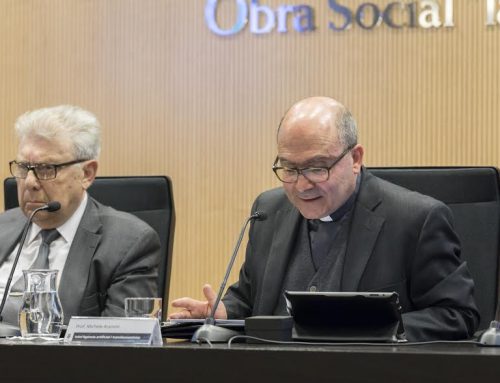Anne Lastman
Biblical Typology is a most fascinating way of peering into and reading scriptures past to present and once this is commenced it’s so exciting and illuminating and beautiful that one can see the hand of God (using human hand of scribe) actually writing the scripture. In a way typology is looking backwards and slowly moving forwards until the actual Amen at the very end of Revelation.
Scrutinizing scripture is the seeing God’s plan slowly, very slowly, emerge and travel through time to reach the final destination. Jesus the Redeemer. He who is sinless. To redeem the creature who had sinned. It’s probably better to say, show, how a time, a people foreshadowed the one to come in fulfillment of the promise in Genesis 3:14 which promised that one was to come, unobtrusively, hidden, just as the one who slithered through, unnoticed, and entered the serene garden, so too the promised one would be the one whom the “types” have pointed to. One who would enter quietly unobtrusively not to introduce death like the slithering one but to introduce life. The life which was with the human being before the enemy stole it.
We can point to St Paul who led us into this type of scrutiny when he says in Romans 5:14 that Jesus was the new Adam. The first Adam set out a schema for the ”type” which would be the beginning of the journey to find the mysterious new human, new Adam, not different in design, but different in innocence as the innocence which was in the beginning. The new Adam was promised. A new Adam who would repair the damage done by the first Adam. The one of whom Moses said in Deut.18:15. “The Lord your God will raise up for you a prophet like me, and to heed him when he comes” and we see this “This is my beloved son hear ye him” Lk 9:35 and “This is my beloved son with whom am well pleased. Listen to him.” Mt.17:5 . The words and promise of Moses a “type” fulfilled.
Typology is a study of “types” or shadows similar to the person or situation which is being sought
Personally, I would prefer to called this the journey fulfilling the promise of Genesis 3:15
A people walking a road obscurely marked and which travelling society “saw but didn’t see” or understand. The words of Moses were not understood. There was no one in their midst whom they saw as future saviour except Moses himself who had led them out of slavery, and God who gave them the Tablets of the Law. He appeared visible and qualified as saviour. This is the kind of saviour expected much further forward, one in “type” of Moses or King David.
The road to the unknown saviour had many twists and turns and with people and situations (Isaiah7:14) heard but not understood. “An Almah . A maiden, shall conceive and bear a son and shall call his name Immanuel” (God is with us) And again a new clue, fulfilled when “ the angel came to the maiden Miriam and announced to her that she will conceive and bear a child, and you shall call his name Jesus” (He will be savior of his people”, Immanuel ) the name Yehoshua, Josuah, Jesus, another “type” this time by name. A “type” of person and event to come. A clue or “type” Joshua/Yehoshua/Jesus, both saviour and redeemer of his people. This person and event would eventually lead to the fulfilment, the promise of God in Genesis (3:15) who announces the “good news” of the promise of salvation. “The kingdom of God is at hand” (Mk.1:15) Redemption. With this announcement Adam and Eve (man and woman) will again be permitted to see the face of God (Jesus)and live. (Ex 33:20) Prior to that the gates of Eden (paradise) had been shut and protected by the flaming swords and so the face of God could no longer be seen and re-entry into the garden (God’s presence) was forbidden. After sin a barrier was placed between God and sinful man “Thine eyes are too pure to gaze upon iniquity” (Hbk1:13) However the time would come when God again (in Jesus) would allow himself to be seen by man, and not die. A time would come when he again would sit at table with them eat and he would be with his people to the end of time, and he would prepare a place for them as had been intended from the beginning. They would be with him
This reminds me of Jesus on the road to Emmaus where he says to the despondent men who hadn’t recognized him “how foolish you are and how slow to believe all that the prophets have spoken! Did you not know what he had to experience? Did not the messiah have to suffer these things and then enter his glory?” And beginning with Moses and all the prophets he explained to them what was said in all the scriptures concerning himself (Lk24:25) and he went through all of scriptures where an allusion to his person is to be found and pieces of the puzzle fit. (Lk 23:25). Jesus himself told his followers that all which had been spoken about him from the very beginning which had to be achieved and then he would return to his glory, the glory he had with his father before the world began (Jn 17:5).
Typology is every piece of the scripture puzzle where a sign or symbol of Jesus (messiah) is hidden until the appointed time. The clues spoke of his arrival, hidden life, his work, his way of leaving behind a people who would continue his work, to ensure that all may see the face of God and live. At every place where a “type” is found is similar to the life and time in which Jesus himself is found. His sufferings which are foretold, if looked for (cross). His story had begun from the beginning. “In the beginning was the word.” Jesus, born both in the heavens and on earth.
His appearance would of course take a long time to emerge, but to God a day is like a thousand years (2 Peter 3:8) and so there was no hurry to reach the goal. The “type” could/would be seen within a predestined chosen people and generations and eventually, all created humanity “Go into all the world and preach the good news (Gospel) to every creature and remember I am with you till the end of time” (Mt16:15-16) He would leave a clue to his presence being perpetually here till his time to come back again. A person, a miracle, an apostle. a believer. We can see this so clearly when reading the Psalms. Every Psalm has an allusion to him, a word, a line, paragraph, description, name, even sufferings. (Ps 22.) Each of the prophets from the major ones to the minor ones spoke of him “See I will send the prophet Elijah (John the Baptist) before the great and dreadful day of the Lord comes.” (Mal:4:5) and “I have loved you says the Lord” (Mal1:2).
From the very beginning, after sin, we see and recognize “types” in Abel, the shepherd (Jesus, the shepherd) killed by his brother Cain. The Good Shepherd (Jesus) killed by his own brothers (the Jews) influenced by the murderer from the beginning (Lucifer).
from then on beginning I and the first “type” chapter 4 of Genesis we meet all the other “types” Isaac, the victim who is to be killed by Abraham his father on Mt Horeb (all theophanies on mountains) a testing of loyalty by God not completed because the angel held Abraham’s arm, to stop the death, whereas God did not stop the death of his own son, Jesus, because to defeat death (testing, the promise of the eating of the fruit was, death) was his task to do. One was to be a test of loyalty not failed like the test of Adam and Eve, (man and woman) who failed, (do not eat of the fruit of the tree of good and evil you will surely die) and in the heavens is a “type” of another victim, Jesus, permitted by his Father to die “Father not my will but your will be done” Lk.22:32) total filial loyalty. This testing was faithful.
Right from the very beginning the “types” are so strong but we see them with the eyes and writings and meditations of eons after the events and the personages have long passed, but those living the “types” could not peer into the future as we do into the past. Slowly new learnings and understandings emerge which show how and why redemption was necessary, and how God achieved this salvation, and why it took so long when he could have done it instantly, but the human beings were given a different mandate and a different freedom than the angels. He paved the way and the people who would be involved in His plan, and which would engage the birth of his son.
We can look back and see “types” and recognize them. We can see their failings and wonder how come they didn’t see? And yet God chose from a family, clan, tribe, a kingdom and finally nation who would be his emissaries. Not perfect people or tribes, nations, kingdoms but human beings, sinners. Sinners, like the apostles, and saints, and ordinary people whose weakness at times leads to failure, but never an abandonment by their Father.
We can enter scripture through Genesis and see clearly the “types”. Genesis beginning of “types” (Abel and the enemy Cain). Exodus (Moses and enemy Pharaoh) begins and serves a smorgasbord of “types” e.g. beginning with birth of Moses and birth of Jesus both heralded by death of innocents, throughout desert journey many “types”. Both Moses and Jesus fasted for 40 days. Both In Egypt as children, Jesus was taken by his parents to escape Herod “when Israel was a child, I loved him, and out of Egypt I called my son (Hosea 11) The family of Jesus were called out of Egypt when his enemy had died (Herod). Moses called out of Egypt to lead his people out of slavery.
An interesting “type” is the one where face of Moses shone as he was descending from Mt Sinai after having been in the presence of, and speaking with Yahweh, and he carried with him the Tablets of the law. Jesus took Peter James and John to a mount Tabor and there the apostles witnessed Jesus as God, and his face shone like the sun and his garments were as white as snow.(Mt 17:2) And Jesus also gave the new tablets of law, the beatitudes. On Mt Tabor, and the Transfiguration, the two Patriarchs (Moses and Elijah – both involved with theophanies on mountains. Mt Carmel, Mt Sinai) spoke to Jesus about his own exodus from this earth which he was to endure. Like Moses and his people, Jesus’s Exodus would be one of pain.
Another really important type was Moses changing water into blood “he raised his staff in the presence of Pharaoh and his officials and struck the water of the Nile and all the water was changed into blood.” (Ex 7:14) We see this “type” when Moses changed the water into blood and Jesus changed water into wine and then wine into his own precious blood.(Luke 22:19)
Perhaps another less regarded “type” might be Moses’s sister called Miriam. Jesus’s mother also Miriam.
As I said Exodus presents a multitude of “types”
We continue with Joseph in OT who was stripped of bloody garments. Jesus was stripped of bloody garments. Joseph Ot Testament sold for 20 pieces of silver; Jesus sold for 30 pieces of silver. Again, the story of Joseph in OT has many “types” clearly fulfilled in Jesus.
The Ark of the Covenant of OT carried the “Word” written by God. The New Testament Ark of the Covenant (Mary) carried the “Word” enfleshed.
The Kings of Israel manifested many “types” fulfilled by Jesus. Kings Saul, David, Solomon, Josiah,Hezekiah,Zedekiah, ( these and many more were flesh Kings) Jesus in his kingship was divine. “Indeed, this was the son of God” On his cross “Jesus of Nazareth king of the Jews” (Jn 19:19) Jesus fully human and fully divine. Jesus declared King both in his humanity and divinity.
The book of the Bible contains 66 books (39 OT and 27 NT) and in each book, we encounter so many allusions to Jesus, but there is a need to look for them. Indeed, all the books from beginning to the end. Every book, unknowingly , was written with the searching for the Messiah in mind, even though it was not what was thought. God (Yahweh Southern Kingdom, Elohim, Northern Kingdom) slowly paved the way, called both saints and sinners. He called a people of the same nature with which he had created them and helped him to redeem them with one like them but unlike them. In his humanity he was like them but as Peter, James and John saw in in the Transfiguration the God Son, the living sinful ones were again able to see the face of God live. He again dined with them, walked with them, he dialogued with them with all their weaknesses, he reopened the gates so that this might be possible for all. To see the face of God and live.
Those who walked with him, saw him in the flesh, ate with him, saw him in his flesh, body and blood. For all time.










